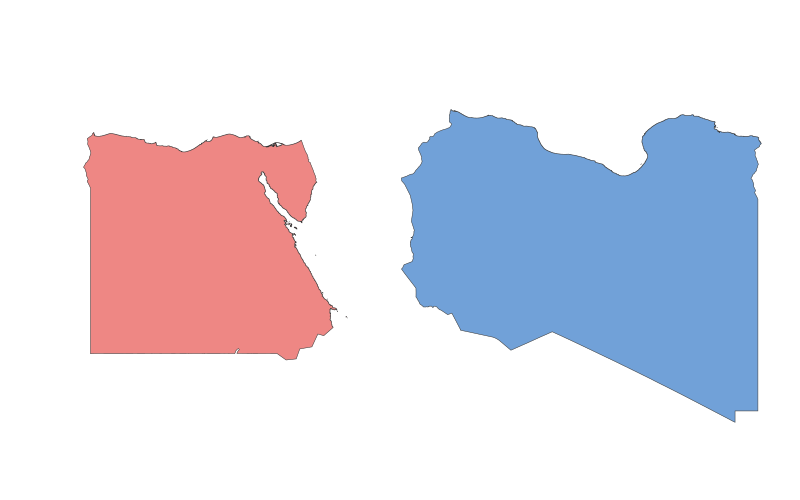Egypt vs. Libya: A Geographical Comparison

Comparison Table
| Category | Egypt | Libya |
|---|---|---|
| Location | Northeast Africa, borders Mediterranean Sea, Red Sea | North Africa, borders Mediterranean Sea |
| Size | ~1,010,000 km² | ~1,760,000 km² |
| Climate | Arid desert; Mediterranean coast has mild winters | Mostly desert; Mediterranean coast has moderate climate |
| Natural Resources | Petroleum, natural gas, iron ore, phosphates | Petroleum, natural gas, gypsum |
| Urban Development | Cairo (capital), Alexandria, Giza are major cities | Tripoli (capital), Benghazi, Misrata are key urban centers |
| Transportation | Extensive road networks, Nile River transport, international airports | Limited road infrastructure, major airports in Tripoli and Benghazi |
Description
Egypt
Egypt, located in Northeast Africa, is one of the most historically significant countries in the world. Home to ancient civilizations like the Pharaohs, it boasts iconic landmarks such as the Pyramids of Giza and the Nile River. The country's economy relies heavily on tourism, agriculture (along the Nile), and petroleum exports. Culturally, Egypt is a blend of Arab, African, and Mediterranean influences, with Islam being the dominant religion. The capital, Cairo, is a bustling metropolis and a cultural hub.
Libya
Libya, situated in North Africa, is the fourth-largest country on the continent by area. Historically, it was part of the Roman Empire and later the Ottoman Empire before gaining independence in the 20th century. Libya's economy is heavily dependent on oil exports, which account for most of its GDP. The country has faced political instability since the 2011 revolution. Culturally, Libya is predominantly Arab and Muslim, with Tripoli and Benghazi serving as its main cultural and economic centers. The vast Sahara Desert covers much of its territory, limiting urban development outside the coastal regions.